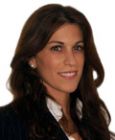
There is only so much you can learn from books and lectures. It is when you have a true experience that knowing occurs. Surrounded by a flurry of paper scraps, Elmer's glue, and scissors, I learned the ugly truth about beauty. The task that was given to the girls I was working with was quite simple, create an inspiration board using the images from stacks of magazines. After the hour was over, all of the girls had an opportunity to share their boards with the rest of the group. One of the girls had a particularly empty board filled with very few images cut from magazines, for which she compensated with her own drawings. "I couldn't find me" she exclaimed. After receiving blank stares, she again blurted out "I couldn't find myself. There are aren't any Black girls in these magazines."
Even though I had done my due diligence speaking with the girl of her experience, discussing what that meant for the rest of the group, and alerting the staff, her words did not leave me. Had I ever been unable to "find myself"? Having dark hair and dark eyes, I have certainly been aware of the "lighter is prettier" standard that prevails in our culture, but aside from the occasional comments from strangers that I might be lucky enough to have children with blond hair and blue eyes rather than my brown hair and eyes and a lame lyric about the beauty of light eyes and hair over dark, I still could find images of those who looked like me. I had Cindy Crawford, I had Snow White, I had Van Morrison's Brown Eyed Girl! I could always see "me" in the pages of a magazine, on an ad, or across the TV screen. If I had to make an inspiration board from those magazine stacks I could find hundreds images with "me"...but she could not.
This vicarious experience stayed with me through the years until it was again raised after Satoshi Kanazawa's blog on Psychology Today stated "black women were rated less physically attractive than other women." Just putting aside flaws of the study, subjective nature of participants, and intent of the author, where was the sensitivity? I imaged the little girl I had worked with after years of subtly being told she was not enough through omission having that confirmed by Kanazawa's commission. Amidst my frustration I turned to Dr. Serena Butler-Johnson, a licensed psychologist in Washington, D.C. for some answers.
Butler-Johnson noted the continued experience of invalidation this little girl encountered even in the twenty-first century, which happens more frequently than we realize among African-American girls. These invalidating experiences are multilayered occurring in the mainstream media, in the home, and among peers. She points out that although our understanding of attractiveness or desirability come from multiple sources, we cannot discount the messages we receive from our external environment as a primary contributor to our understanding of what is beautiful. In our examination of these messages, actively questioning the standard is just as important as identifying their subtle presence.
She states that, "African-American women and those in other minority groups are seldom featured as representations of beauty in American pop culture." Women such as Jennifer Aniston, Angelina Jolie, and Charlize Theron tend to occupy those roles in television, movies, and fashion. She believes that when African-Americans are in these roles, the women often have Eurocentric features, such as Halle Berry and Zoe Saldana, which further reinforces the dominant culture beauty ideals. Without external validation, young children and women can internalize "narrowly defined conceptions of beauty," resulting in feelings of inferiority, confusion, and exclusion.
Moving to the home, Butler-Johnson states deeply ingrained beliefs that "lighter is better" are often passed through the generations, in many minority communities. Discussions about "good hair" versus "bad hair" and being encouraged to stay out of the sun are ways that an African-American child may learn that she is not as pretty without "straight hair" or "light skin." For younger females, in addition to difficult developmental issues, the school environment and peer environment can contribute to a negative understanding of beauty as an African-American. For example, Butler-Johnson believes it is not uncommon for African-American children to be teased by other African-American children about their skin tone or hair.
Dr. Butler-Johnson does suggest ways to counter the negative images surrounding African-American beauty. The primary goal of any intervention is to identify and explore the messages, standards, and images we receive that are deemed beautiful. Additionally, any beauty practices we engage in, whether it is straightening our hair or avoiding the sun, should be motivated from an internal place of health and self-acceptance. Whether working with your child or grappling with your own beauty constructs, Butler-Johnson believes that you must accept, and validate your appearance and those that do not follow the "standard." She feels that you should explore and examine your own biases when it comes to your understanding of attractiveness, and the societal roots of these biases. After you have reached understanding, it is time to challenge these biases by broadening your definition of beauty adopting a global perspective. Incorporating diverse images at home is an effective way to balance the beauty message.
Butler-Johnson feels that the African-American community is continuing to redefine beauty standards. This requires identifying the ingrained beliefs about beauty held deep in the psyche and conflicting messages about beauty (including the skin bleaching ads following articles about embracing ethnicity in African-American magazines). The cracking open of beauty messages and the identification of what is found there can only lead to change, which I hope the little girl with whom I worked will someday find.
Contact Dr. Butler-Johnson: sbutlerj@comcast.net
Join the discussion below!

